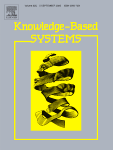UK-based MARSS Group has expanded its NiDAR command and control (C2) system to include autonomous management of unmanned systems (UxS), aiming to streamline decision-making and reduce operator burden in complex threat environments. The enhancement integrates real-time sensor fusion with AI-driven tasking of drones and robotic platforms across maritime and critical infrastructure domains.
NiDAR’s Evolution into a Multi-Domain Autonomous C2 System
Originally developed as a modular situational awareness platform for maritime security and critical infrastructure protection, the NiDAR system has evolved into a full-spectrum C2 suite. It fuses data from multiple sensors—including radar, EO/IR cameras, sonar, AIS feeds, and RF detectors—to provide operators with a real-time threat picture. The latest upgrade introduces seamless integration of unmanned aerial vehicles (UAVs), unmanned surface vessels (USVs), and remotely operated vehicles (ROVs), enabling autonomous tasking based on detected threats or anomalies.
This evolution positions NiDAR as a key enabler of distributed autonomy in contested environments such as littoral zones or offshore energy platforms. According to MARSS Group CEO Johannes Pinl, the goal is “to remove the cognitive burden from human operators by automating routine surveillance tasks and enabling faster responses to emerging threats.”
Autonomous UxS Tasking Enhances Threat Response Capabilities
The upgraded NiDAR system can now autonomously deploy UxS assets in response to specific triggers—such as unidentified surface contacts or drone incursions—without requiring manual operator input. For example:
- A USV can be dispatched to intercept or shadow an unknown vessel approaching a restricted zone.
- A UAV may be launched automatically to investigate an airborne target detected by radar or RF triangulation.
- An ROV could be tasked to inspect subsea anomalies near undersea cables or offshore rigs.
This autonomy is governed by mission-defined rulesets and AI-based behavior trees that balance responsiveness with safety constraints. Operators retain override capability but are no longer required to micromanage every asset movement. This approach reduces latency between detection and interdiction—critical in fast-moving scenarios like swarming drone attacks or asymmetric maritime threats.
Applications Across Maritime Security and Infrastructure Defense
NiDAR’s autonomous UxS integration is optimized for several operational domains:
- Counter-UAS at Sea: Detecting low-RCS drones via radar/RF fusion; deploying UAVs or EW payloads for soft-kill responses.
- Port & Coastal Surveillance: Monitoring unauthorized vessel movements; cueing EO/IR sensors on suspicious activity; dispatching USVs for interception.
- Critical Infrastructure Protection: Securing offshore oil/gas platforms or subsea pipelines against sabotage using ROV patrols and anomaly detection algorithms.
- MCM & EOD Support: Coordinating multiple robotic assets during mine countermeasure operations in cluttered littoral zones using shared autonomy protocols.
This flexibility makes the system attractive not only to navies but also coast guards, energy operators, port authorities, and private security contractors operating in high-risk maritime environments.
Cognitive Burden Reduction Through AI-Driven Decision Support
A key design goal of the enhanced NiDAR architecture is reducing operator fatigue through intelligent automation. The system uses machine learning algorithms trained on historical sensor data to classify contacts by behavior patterns—distinguishing between benign traffic (e.g., fishing boats) versus potentially hostile actors (e.g., loitering drones). Once flagged as anomalous, these contacts trigger automated workflows such as alert escalation or UxS dispatch without requiring manual correlation by human analysts.
This “human-on-the-loop” model allows personnel to focus on strategic decisions while the system handles tactical execution within predefined parameters. It also supports multi-domain coordination—for instance, synchronizing UAV reconnaissance with USV tracking during interdiction missions—all from a unified interface that visualizes fused sensor data in real time.
System Architecture Supports Scalability and Interoperability
The enhanced NiDAR platform adheres to open architecture principles that enable integration with third-party sensors, effectors (e.g., non-lethal deterrents), and communication networks via standard protocols such as STANAG 4586 for UAV control or NATO Link-16 for tactical data exchange. This modularity allows users to tailor deployments based on mission needs—from single-site installations at coastal facilities to distributed networks aboard naval vessels or across large offshore zones.
The system is also designed with edge computing capabilities that allow local processing of sensor data even when disconnected from centralized command centers—a key requirement for resilience in denied environments where GNSS jamming or SATCOM degradation may occur.
Operational Deployments and Future Roadmap
MARRS has confirmed that variants of the upgraded NiDAR suite are already operational aboard several naval platforms—including Middle Eastern patrol vessels—and at fixed coastal installations protecting critical infrastructure. While specific customers were not disclosed due to contractual confidentiality clauses common in sensitive security sectors, MARSS has previously partnered with Gulf Cooperation Council states on integrated surveillance projects involving counter-UAS capabilities.
The company plans further enhancements including tighter integration of kinetic effectors such as directed energy weapons (DEWs) or anti-drone munitions into the C2 loop. Additionally, MARSS is exploring swarm control algorithms that would allow coordinated tasking of multiple heterogeneous UxS assets during complex missions like wide-area search-and-rescue (SAR) or layered defense against saturation attacks.
Conclusion: Toward Distributed Autonomy in Maritime Defense
The expansion of MARSS’ NiDAR platform reflects broader trends toward distributed autonomy within military ISR/C4ISR architectures. By integrating autonomous unmanned systems directly into threat detection loops—and managing them via AI-enhanced decision support—the upgraded system offers faster response times while reducing manpower requirements. As contested maritime zones grow more complex due to state-sponsored gray zone activities and proliferating drone threats, such adaptive C2 solutions will likely become central pillars of next-generation defense postures across both military and civilian sectors.









